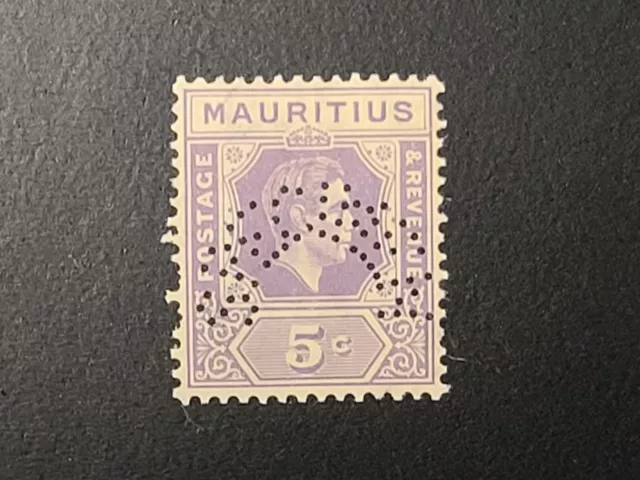Mauritius Specimen Stamp KGVI 5 Cents Mint Old Specimen Stamp Nice Saver to Keep
MAURITIUS SPECIMEN STAMP Mauritius Specimen Stamp KGVI 5 Cents Mint Old Specimen Stamp
MAURITIUS IS AN ISLAND NATION IN THE INDIAN OCEAN Same Stamp with Different Stamp Numbering System: Scott Number: Stanley Gibbons: Mauritius ( /məˈrɪʃ(i)əs, mɔː-/ ( listen ) mər-ISH-(ee-)əs,mor- ; French: Maurice [mɔʁis,moʁis] ( listen ) ; MauritianCreole : Moris [moʁis] ), officially the Republicof Mauritius, is an island nation in the IndianOcean about 2,000 kilometres (1,200 mi) off the southeastcoast of the African continent, east of Madagascar . It includes the main island(also called Mauritius), as well as Rodrigues , Agaléga and St. Brandon . [10] [11] Theislands of Mauritius and Rodrigues, along with nearby Réunion (a French overseas department ), arepart of the MascareneIslands . The main island of Mauritius, where most of the population isconcentrated, hosts the capital and largest city, PortLouis . The country spans 2,040 square kilometres(790 sq mi) and has an exclusive economic zone covering 2,300,000square kilometres (890,000 sq mi). [12] Arab sailorswere the first to discover the uninhabited island, around 975, and they calledit Dina Arobi . [13] [14] Theearliest confirmed discovery was in 1507 by Portuguese sailors, who otherwisetook little interest in the islands. The Dutch took possession in 1598,establishing a succession of short-lived settlements over a period of about 120years, before abandoning their efforts in 1710. France took control in 1715,renaming it Isle de France . In1810, the UnitedKingdom seized the island , andfour years later, in the Treaty of Paris , France ceded Mauritius and itsdependencies to the United Kingdom. The British colony of Mauritius includedRodrigues, Agaléga, St. Brandon, the Chagos Archipelago ,and, until 1906, the Seychelles . [10] [15] Mauritiusand France dispute sovereignty over the island of Tromelin as the Treaty of Paris failed tomention it specifically. [16] Mauritiusremained a primarily plantation-based colony of the United Kingdom untilindependence in 1968. In 1965, three years before Mauritius became independent, the UKsplit off the Chagos Archipelago fromMauritian territory, and also split off the islands of Aldabra, Farquhar, andDesroches from the Seychelles, to form the British Indian OceanTerritory (BIOT). [17] The local population was forcibly expelled andthe largest island, DiegoGarcia , was leased to the United States. The UK has restricted accessto the Chagos Archipelago, barring entry to casual tourists, the media, andformer inhabitants. [18] Thesovereignty of the Chagos is disputed betweenMauritius and the UK. In February 2019, the International Court ofJustice issued an advisory opinion ordering the UK to return theChagos Islands to Mauritius as rapidly as possible to complete thedecolonisation of Mauritius. Owing to its geographic location and centuries of colonialism,the people ofMauritius are highly diverse in ethnicity, culture ,language and faith. It is the only country in Africa where Hinduism isthe most practised religion. [19] [20] Indo-Mauritians makeup the bulk of the population with significant Creole , Sino-Mauritian and Franco-Mauritian minorities.The island's government is closely modelled on the Westminster parliamentarysystem and Mauritius is highly ranked for economic and political freedom along with being the onlyAfrican country with fulldemocracy . [21] Mauritiusis also the continent's only country with "very high" HumanDevelopment Index . According to the WorldBank , the country is classified as a high-income economy . [22] Mauritiusis also ranked as the most competitive, and one of the most developed economiesin the African region. [23] Thecountry is a welfarestate . The government provides free universal healthcare , freeeducation up through the tertiary level and free publictransportation for students, senior citizens, and the disabled. [24] In2019, Mauritius was ranked the most peaceful African country by the Global Peace Index . [25] Along with the other Mascarene Islands, Mauritius is known forits varied flora and fauna . Many species are endemicto the island. The island was the only known home of the dodo , which,along with several other avian species, was made extinct by human activitiesrelatively soon after the island's settlement. There are other endemic animalslike for example: the Mauritian parakeet, the kestrel, and the pink pigeon.
Etymology [ edit ]The first historical evidence of the existence of an island nowknown as Mauritius is on a map produced by the Italian cartographer AlbertoCantino in 1502. [26] [27] Fromthis, it appears that Mauritius bore the name Dina Arobi , verylikely the name shared with the Portuguese by sailors from the subcontinent. In1507, Portuguese sailors visited the uninhabited island. The island appearswith the Portuguese names Cirne or Do-Cerne onearly Portuguese maps, probably from the name of a ship in the 1507 expedition.Another Portuguese sailor, Dom PedroMascarenhas , gave the name Mascarenes to the archipelago. In 1598, a Dutch squadron under Admiral Wybrand van Warwycklanded at GrandPort and named the island Mauritius , in honourof Prince Maurice van Nassau , stadtholder ofthe DutchRepublic . Later the island became a French colony and was renamed Isle de France . On 3December 1810, the French surrendered the island to the United Kingdom duringthe NapoleonicWars . Under British rule, the island's name reverted to Mauritius /məˈrɪʃəs/ ( listen ) .Mauritius is also commonly known as Maurice (pronounced [mɔˈʁis] )and Île Maurice in French, Moris (pronounced [moʁis] ) in MauritianCreole . [28] Early history [ edit ]The island of Mauritius was uninhabited before its firstrecorded visit by Portuguese sailors in the beginning of the 16th century. Thename Dina Arobi has been associated with Arab sailors who first discovered theisland. Portuguese explorations of Mauritius [ edit ]The Treaty of Tordesillas purported togive Portugal theright to colonise this part of world. In 1507, Portuguese sailorscame to the uninhabited island and established a visiting base. Diogo Fernandes Pereira ,a Portuguese navigator, was the first European known to land in Mauritius. Henamed the island "Ilha do Cisne" ("Island of the Swan").The Portuguese did not stay long as they were not interested in these islands. [29] The MascareneIslands were named after PedroMascarenhas , Viceroy of Portuguese India , afterhis visit to the islands in 1512. Rodrigues Island was named after Portuguese explorer Diogo Rodrigues , who first came upon the island in1528. Dutch Mauritius (1638–1710) [ edit ]In 1598 a Dutch squadron under Admiral Wybrand Van Warwycklanded at GrandPort and named the island "Mauritius" after Prince Maurice of Nassau ( Dutch : Mauritsvan Nassau ) of the DutchRepublic . The Dutch inhabited the island in 1638, from which theyexploited ebony treesand introduced sugarcane , domesticanimals and deer . It wasfrom here that Dutch navigator Abel Tasman set out to seek the GreatSouthern Land, mapping parts of Tasmania , New Zealand and NewGuinea . The first Dutch settlement lasted 20 years. In 1639, slavesarrived in Mauritius from Madagascar. The Dutch East India Company brought themto cut down ebony trees and to work in the new tobacco and sugar caneplantations. [30] Severalattempts to establish a colony permanently were subsequently made, but thesettlements never developed enough to produce dividends, causing the Dutch toabandon Mauritius in 1710. [29] [31] A1755 article in the English Leeds Intelligencer claims that theisland was abandoned due to the large number of long tailed macaque monkeys "whichdestroyed everything in it," and that it was also known at the time asthe Island of Monkeys. [32] Portuguesesailors had introduced these monkeys to the islandfrom their native habitat in Southeast Asia, prior to Dutch rule. [33] French Mauritius (1715–1810) [ edit ]Mainarticle: Isle de France (Mauritius) France, which already controlled neighbouring Île Bourbon(now Réunion ), tookcontrol of Mauritius in 1715 and renamed it Isle de France . In1723, the Code Noir wasestablished to categorise one group of human beings as "goods", inorder for the owner of these goods to be able to obtain insurance money andcompensation in case of loss of his "goods". [34] The1735 arrival of French governor Bertrand-François Mahé deLa Bourdonnais coincided with development of a prosperous economy basedon sugar production. Mahé de La Bourdonnais established PortLouis as a naval base and a shipbuilding centre. [29] Underhis governorship, numerous buildings were erected, a number of which are stillstanding. These include part of Government House, the Château de Mon Plaisir,and the Line Barracks, the headquarters of the police force . The island was under theadministration of the French East India Company , whichmaintained its presence until 1767. [29] Duringthe French rule, slaves were brought from parts of Africa such as Mozambiqueand Zanzibar. [35] Asa result, the island's population rose dramatically from 15,000 to 49,000within thirty years. During the late eighteenth century, African slavesaccounted for around 80 percent of the island's population, and by the earlynineteenth century there were 60,000 slaves on the island. [30] Inearly 1729, Indians from Pondicherry, India , arrived in Mauritius aboard thevessel La Sirène . Work contracts for these craftsmen were signed in1734 at the time when they acquired their freedom. [36] From 1767 to 1810, except for a brief period during the FrenchRevolution when the inhabitants set up a government virtuallyindependent of France, the island was controlled by officials appointed by theFrench government. Jacques-Henri Bernardin deSaint-Pierre lived on the island from 1768 to 1771, then went back toFrance, where he wrote Paul etVirginie , a love story that made the Isle de France famous wherever theFrench language was spoken. In 1796 the settlers broke away from French controlwhen the government in Paris attempted to abolish slavery. [37] Twofamous French governors were the Vicomte de Souillac (who constructed theChaussée in Port Louis [38] andencouraged farmers to settle in the district of Savanne) and Antoine Bruni d'Entrecasteaux (whosaw to it that the French in the Indian Ocean should have their headquarters inMauritius instead of Pondicherry inIndia). [39] Charles Mathieu IsidoreDecaen was a successful general in the French Revolutionary Wars and,in some ways, a rival of Napoléon I . He ruled as Governor of Isle de France andRéunion from 1803 to 1810. British naval cartographer and explorer MatthewFlinders was arrested and detained by General Decaen on the islandfrom 1803 to 1810, [40] [41] incontravention of an order from Napoléon. During the NapoleonicWars , Mauritius became a base from which Frenchcorsairs organised successful raids on British commercial ships.The raids continued until 1810, when a Royal Navy expedition led by Commodore JosiasRowley , R.N. ,an Anglo-Irish aristocrat , was sent to capture the island.Despite winning the Battle of Grand Port , the only French navalvictory over the British during these wars, the French could not prevent the British from landing at CapMalheureux three months later. They formally surrendered the islandon the fifth day of the invasion, 3 December 1810, [39] onterms allowing settlers to keep their land and property and to use the Frenchlanguage and law of France in criminal and civil matters. Under British rule,the island's name reverted to Mauritius. [29] Theswift conquest of Mauritius was fictionalised in the novel The Mauritius Command by PatrickO'Brian , first published in 1977. British Mauritius (1810–1968) [ edit ]Mainarticle: British Mauritius 1830–1835: British rule and reform [ edit ]The British administration, which began with Sir Robert Farquhar as its first governor , oversawrapid social and economic changes. However, it was tainted by the Ratsitatane episode. Ratsitatane , nephew of King Radama of Madagascar , wasbrought to Mauritius as a political prisoner. He managed to escape from prisonand plotted a rebellion that would free the island's slaves. He was betrayed byhis associate Laizaf and was caught by a group of militiamen led byFranco-Mauritian lawyer Adrien d'Épinay and summarilyexecuted . [42] Hewas beheaded at Plaine Verte on 15 April 1822, and his head was displayed as adeterrent against possible slave rebellions. [43] In 1832, d'Épinay launched the first Mauritian newspaper (LeCernéen ), which was not controlled by the government. In the same year,there was a move by the procureur-general to abolish slaverywithout compensation to the slave owners. This gave rise to discontent, and, tocheck an eventual rebellion, the government ordered all the inhabitants tosurrender their arms. Furthermore, a stone fortress, Fort Adelaide, was builton a hill (now known as the Citadel hill) in the centre of Port Louis to quellany uprising. [38] Slavery wasgradually abolished over several years after 1833, and the planters ultimatelyreceived two million poundssterling in compensation for the loss of their slaves, who had beenimported from Africa and Madagascar during the French occupation. [44] [45] 1834–1921: Indian labour imported [ edit ]The abolition of slavery hadimportant impacts on Mauritius's society, economy and population. The plantersbrought a large number of indentured labourers from India to workin the sugar cane fields. Between 1834 and 1921, around half a millionindentured labourers were present on the island. They worked on sugar estates,factories, in transport and on construction sites. Additionally, the Britishbrought 8,740 Indian soldiersto the island. [29] Aapravasi Ghat , in the bay at PortLouis and now a UNESCO site,was the first British colony toserve as a major reception centre for indentured servants . An important figure of the 19th century was Rémy Ollier, ajournalist of mixed origin. In 1828, the colour bar was officially abolished inMauritius, but British governors gave little power to coloured persons, andappointed only whites as leading officials. Rémy Ollier petitioned to QueenVictoria to allow coloureds in the council of government, and thisbecame possible a few years later. He also made Port Louis become amunicipality so that the citizens could administer the town through their ownelected representatives. A street has been named after him in Port Louis, andhis bust was erected in the Jardin de la Compagnie in 1906. [39] In 1885 a new constitution wasintroduced. It was referred to as Cens Démocratique and itincorporated some of the principles advocated by one of the Creole leaders,Onésipho Beaugeard. It created elected positions in the Legislative Council —although the franchise was restricted mainly to the white French andfair-skinned Indian elite who owned real estate. In 1886, Governor John Pope Hennessy nominated Gnanadicarayen Arlanda asthe first ever Indo-Mauritian memberof the ruling Council — despite the sugar oligarchy's preference for rivalIndo-Mauritian Emile Sandapa. Arlanda served until 1891. [46] Two main political parties were active at that time, thepro-Hennessy party being Sir William Newton 's ReformParty where as the anti-Hennessy party Democrats was led by Gustave de Coriolisand Onésipho Beaugeard. [47] The labourers brought from India were not always fairly treated,and a German, Adolph von Plevitz, made himself the unofficial protector ofthese immigrants. He mixed with many of the labourers, and in 1871 helped themto write a petition that was sent to Governor Gordon . Acommission was appointed to look into the complaints made by the Indianimmigrants, and in 1872 two lawyers, appointed by the British Crown, were sentfrom England to make an inquiry. This Royal Commission recommended severalmeasures that would affect the lives of Indian labourers during the next fiftyyears. [39] In November 1901, Mahatma Gandhi visited Mauritius, on hisway from South Africa to India. He stayed on the island for two weeks, andurged the Indo-Mauritian community to take an interest in education and to playa more active role in politics. Back in India, he sent over a younglawyer, Manilal Doctor ,to improve the plight of the Indo-Mauritians. [48] 1901–1914: Modernization and reform [ edit ]In 1901, faster links were established with the island ofRodrigues thanks to the wireless . [48] In 1903, motorcars were introduced in Mauritius, and in 1910 thefirst taxis, operated by Joseph Merven, came into service. The electrificationof Port Louis took place in 1909, and in the same decade the Mauritius HydroElectric Company of the Atchia Brothers wasauthorised to provide power to the towns of upper Plaines Wilhems. The coat of arms of Mauritius was adopted in 1906, consisting ofan Sambur deer and the extinct dodo , whichhas currently been a symbol of national identity since independence. [49] The 1910s were a period of political agitation. The risingmiddle class (made up of doctors, lawyers, and teachers) began to challenge thepolitical power of the sugar cane landowners. Dr. Eugène Laurent, mayor of PortLouis, was the leader of this new group; his party, Action Libérale, demandedthat more people should be allowed to vote in the elections. Action Libéralewas opposed by the Parti de l'Ordre, led by Henri Leclézio, the mostinfluential of the sugar magnates. [39] In 1911, there were riots in Port Louis due to a false rumourthat Dr. Eugène Laurent had been murdered by the oligarchs in Curepipe. Thisbecame known as the 1911 Curepipe riots . Shops and offices weredamaged in the capital, and one person was killed. [48] In the same year, 1911, the first public cinema shows took placein Curepipe, and, in the same town, a stone building was erected to house theRoyal College. [48] In1912, a wider telephone network came into service, used by the government,business firms, and a few private households. 1914–1919: World War I prosperity [ edit ]World WarI broke out in August 1914. Many Mauritians volunteered tofight in Europe against the Germans and in Mesopotamia against the Turks. But thewar affected Mauritius much less than the wars of the eighteenth century. Infact, the 1914–1918 war was a period of great prosperity, due to a boom insugar prices. In 1919, the Mauritius Sugar Syndicate came into being, whichincluded 70% of all sugar producers. [50] 1920–1939: Liberalization andreaction [ edit ]The 1920s saw the rise of a "retrocessionism"movement, which favoured the retrocession of Mauritius to France. The movementrapidly collapsed because none of the candidates who wanted Mauritius to begiven back to France were elected in the 1921 elections. In the post-war recession, there was a sharp drop in sugarprices. Many sugar estates closed down, marking the end of an era for the sugarmagnates who had not only controlled the economy but also the political life ofthe country. Raoul Rivet, the editor of Le Mauricien newspaper,campaigned for a revision of the constitution that would give the emergingmiddle class a greater role in the running of the country. The principlesof AryaSamaj began to infiltrate the Hindu community, who clamoured formore social justice. [48] From the end of nominated Arlanda's term in 1891, until 1926,there had been no Indo-Mauritian representation in the Legislative Council.However, at the 1926 elections, Dunputh Lallah and Rajcoomar Gujadhur becamethe first Indo-Mauritians tobe elected at the Legislative Council. At Grand Port, Lallah won over rivalsFernand Louis Morel and Gaston Gebert; at Flacq, Gujadhur defeated PierreMontocchio. [51] 1936 saw the birth of the Labour Party ,launched by MauriceCuré . EmmanuelAnquetil rallied the urban workers while Pandit Sahadeoconcentrated on the rural working class. [52] The Uba riotsof 1937 resulted in reforms by the local British government thatimproved labour conditions and led to the un-banning of labour unions. [53] [54] LabourDay was celebrated for the first time in 1938. More than 30,000 workerssacrificed a day's wage and came from all over the island to attend a giantmeeting at the Champ de Mars. [55] Following the dockers' strikes, trade unionist EmmanuelAnquetil was deported to Rodrigues, MauriceCuré and Pandit Sahadeo were placed under house arrest, whilstnumerous strikers were jailed. Governor Sir BedeClifford assisted Mr Jules Leclezio of the Mauritius SugarSyndicate to counter the effects of the strike by using alternative workersknown as 'black legs'. [56] 1939–1945: World War II [ edit ]At the outbreak of World War II in 1939, many Mauritiansvolunteered to serve under the British flag in Africa and the Near East,fighting against the German and Italian armies. Some went to England to becomepilots and ground staff in the Royal Air Force . Mauritius was never reallythreatened, but in 1943 several British ships were sunk outside Port Louis byGerman submarines. During World War II, conditions were hard in the country; theprices of commodities doubled but workers' salaries increased only by 10 to 20percent. There was civil unrest, and the colonial government censored all tradeunion activities. However, the labourers of Belle Vue Harel Sugar Estate wenton strike on 27 September 1943. [57] Policeofficers eventually fired directly at the crowd, resulting in the deaths of 4labourers: Soondrum Pavatdan (better known as Anjalay Coopen, a 32-year-oldpregnant woman), Moonsamy Moonien (14-year-old boy), Kistnasamy Mooneesamy(37-year-old labourer), and Marday Panapen. [58] Thisbecame known as the Belle Vue Harel Massacre . [59] [60] Socialworker and leader of the Jan Andolan movement Basdeo Bissoondoyal organised thefuneral ceremonies of the 4 dead labourers. [61] Three months later, on December 12, 1943, Basdeo Bissoondoyal organised a massgathering at "Marie Reine de la Paix" in Port Louis, and thesignificant crowd of workers from all over the island confirmed the popularityof his movement Jan Andolan. [62] 1945–1960: Postwar politics,universal suffrage [ edit ]After the proclamation of the new 1947 Constitution the generalelections were held on August 9, 1948 — and, for the first time, the colonialgovernment expanded the franchise to all adults who could write their name inone of the island's 19 languages, abolishing the previous gender and propertyqualifications. [63] [64] GuyRozemont 's Labour Party wonthe majority of the votes [65] with11 of the 19 elected seats won by Hindus . However, the Governor-General Donald Mackenzie-Kennedy appointed12 Conservatives to the Legislative Council on 23 August 1948 to perpetuate thepredominance of white Franco-Mauritians . [66] [63] In1948 Emilienne Rochecouste becamethe first woman to be elected to the Legislative Council, serving until 1953. [67] Guy Rozemont's party bettered its position in 1953, and, on thestrength of the election results, demanded universal suffrage . Constitutional conferences wereheld in London in 1955 and 1957, and the ministerial system was introduced.Voting took place for the first time on the basis of universal adult suffrageon 9 March 1959. The general election was again won by the Labour Party, ledthis time by Sir Seewoosagur Ramgoolam . [68] 1960–1968: Ethnic tensions [ edit ]A Constitutional Review Conference was held in London in 1961,and a programme of further constitutional advance was established. The 1963election was won by the Labour Party and its allies. The ColonialOffice noted that politics of a communal nature was gainingground in Mauritius and that the choice of candidates (by parties) and thevoting behaviour (of electors) were governed by ethnic and casteconsiderations. [68] Aroundthat time, two eminent British academics, RichardTitmuss and James Meade , published a report of theisland's social problems caused by overpopulation and the monoculture of sugarcane. This led to an intense campaign to halt the population explosion, and thedecade registered a sharp decline in population growth. In early 1965, a political assassination took place in thesuburb of Belle-Rose, in the town of Quatre Bornes, where Labour activistRampersad Surath was beaten to death by thugs of rival party Parti Mauricien. [69] [70] On 10 May 1965, racial riots brokeout in the village of Trois Boutiques near Souillac andprogressed to the historic village of Mahébourg . A nationwide State of Emergency wasdeclared on the British colony. The riot was initiated by the murder of PoliceConstable Beesoo in his vehicle by a Creole gang. This was followed by themurder of a civilian named Mr. Robert Brousse in Trois Boutiques. [71] TheCreole gang then proceeded to the coastal historic village of Mahébourg toassault the Indo-Mauritian spectators who were watching a Hindustani movie atCinéma Odéon. Mahébourg police recorded nearly 100 complaints of assaults onIndo-Mauritians. [72] Independence (since 1968) [ edit ]Mainarticle: Mauritius (1968–1992) At the Lancaster Conference of 1965, it became clear thatBritain wanted to relieve itself of the colony of Mauritius. In 1959, HaroldMacmillan had made his famous " Wind of Change Speech " in which heacknowledged that the best option for Britain was to give complete independenceto its colonies. Thus, since the late Fifties, the way was paved forindependence. [73] Later in 1965, after the Lancaster Conference, the Chagos Archipelago wasexcised from the territory of Mauritius to form the British Indian OceanTerritory (BIOT). A general election took place on 7 August 1967,and the Independence Party obtainedthe majority of seats. In January 1968, six weeks before the declaration ofindependence the 1968 Mauritian riots occurred in PortLouis leading to the deaths of 25 people. [74] [75] Mauritius adopted a new constitution, and independence wasproclaimed on 12 March 1968. Sir Seewoosagur Ramgoolam became the first primeminister of an independent Mauritius — with Queen Elizabeth II remaining head of state asQueen of Mauritius. In 1969, the opposition party, Mauritian Militant Movement (MMM),was founded, led by PaulBérenger . Later, in 1971, the MMM — backed by unions — called a seriesof strikes in the port, which caused a state of emergency in the country. [76] The coalition government of the Labour Party and the PMSD (PartiMauricien Social Démocrate) reacted by curtailing civil liberties and curbingfreedom of the press. [48] Twounsuccessful apparent assassination attempts were made against Paul Bérenger: · On October 1, 1971, his supporter Fareed Muttur died insuspicious circumstances at Le Réduit, whilst driving Paul Bérenger's car. [77] · The second led to the death of Azor Adélaïde , a dock worker and activist, on25 November 1971. [78] General elections were postponed and public meetings were prohibited.Members of the MMM, including Paul Bérenger, were imprisoned on December 23,1971. The MMM leader was released a year later. [79] In May 1975, a student revolt that started at the University of Mauritius swept across thecountry. [80] Thestudents were unsatisfied with an education system that did not meet theiraspirations, and that gave limited prospects for future employment. On 20 May,thousands of students tried to enter Port-Louis over the Grand River North Westbridge, and clashed with police. An act of Parliament was passed on 16 December1975 to extend the right to vote to 18-year-olds. This was seen as an attemptto appease the frustration of the younger generation. [43] The next general elections took place on 20 December 1976 . TheLabour-CAM coalition won only 28 seats out of 62. [81] TheMMM secured 34 seats in Parliament but outgoing Prime Minister Sir SeewoosagurRamgoolam managed to remain in office, with a two-seat majority, after strikingan alliance with the PMSD of Gaetan Duval. In 1982 an MMM - PSM government (led by PM AneroodJugnauth , Deputy PM HarishBoodhoo and Finance Minister PaulBérenger ) was elected. However, ideological and personality differencesemerged within the MMM and PSM leadership. The power struggle between Bérengerand Jugnauth peaked in March 1983. Jugnauth travelled to New Delhi to attenda Non-Aligned Movement summit; on hisreturn, Bérenger proposed constitutional changes that would strip power fromthe Prime Minister. At Jugnauth's request, PM IndiraGandhi of India planned an armed intervention involving the IndianNavy and Indian Army to prevent a coup underthe code name Operation Lal Dora . [82] [83] [84] The MMM - PSM government split up ninemonths after the June 1982 election. According to an Information Ministryofficial the nine months was a "socialist experiment". [85] HarishBoodhoo dissolved his party PSM to enable all PSMparliamentarians to join Jugnauth's new party MSM, thus remaining in powerwhilst distancing themselves from MMM . [86] TheMSM-Labour-PMSD coalition was victorious at the August 1983 elections,resulting in AneroodJugnauth as PM and Gaëtan Duval as Deputy PM . That period saw growth in the EPZ (Export Processing Zone)sector. Industrialisation began to spread to villages as well, and attractedyoung workers from all ethnic communities. As a result, the sugar industrybegan to lose its hold on the economy. Large retail chains began opening storesin 1985 and offered credit facilities to low-income earners, thus allowing themto afford basic household appliances. There was also a boom in the tourismindustry, and new hotels sprang up throughout the island. In 1989 the stockexchange opened its doors and in 1992 the freeport began operation. [48] In1990, the Prime Minister lostthe vote on changing the Constitution to make the country a republic withBérenger as president. [87] Republic (since 1992) [ edit ]On 12 March 1992, twenty-four years after independence,Mauritius was proclaimed a republic within the Commonwealth of Nations . [29] Thelast governor general, Sir Veerasamy Ringadoo , became the first president . [88] Thiswas under a transitional arrangement, in which he was replaced by Cassam Uteem later that year. [89] Politicalpower remained with the prime minister. Despite an improvement in the economy, which coincided with afall in the price of petrol and a favourable dollar exchange rate, thegovernment did not enjoy full popularity. As early as 1984, there wasdiscontent. Through the Newspapers and Periodicals Amendment Act ,the government tried to make every newspaper provide a bank guarantee of half amillion rupees. Forty-three journalists protested by participating in a publicdemonstration in Port Louis, in front of Parliament. They were arrested andfreed on bail. This caused a public outcry and the government had to review itspolicy. [48] There was also dissatisfaction in the education sector. Therewere not enough high-quality secondary colleges to answer the growing demand ofprimary school leavers who had got through their CPE (Certificate of PrimaryEducation). In 1991, a master plan for education failed to get national supportand contributed to the government's downfall. [48] In December 1995 Navin Ramgoolam was elected as PM ofthe Labour–MMM alliance. In October 1996 the triple murder of politicalactivists at Gorah-Issac Street in Port Louis led to several arrests and a longinvestigation. [90] The year 1999 was marked by civil unrest and riots in February and then in May . Following the Kaya riots President Cassam Uteem and Cardinal JeanMargéot toured the country and calm was restored after four daysof turmoil. [91] Acommission of enquiry was set up to investigate the root causes of the socialdisturbance. The resulting report delved into the cause of poverty andqualified many tenacious beliefs as perceptions. [92] InJanuary 2000 political activist Rajen Sabapathee was shot dead after he escapedfrom La Bastille jail. [93] . Anerood Jugnauth of the MSM returned to power in September 2000after securing an alliance with the MMM. In 2002, the island of Rodrigues becamean autonomous entity within the republic and was thus able to elect its ownrepresentatives to administer the island. In 2003, the prime ministership wastransferred to Paul Bérenger of the MMM, and Anerood Jugnauth became president.Bérenger was the first Franco-Mauritian Prime Minister in the country'spost-Independence history. In 2005 elections , NavinRamgoolam became PM under the new coalition of Labour–PMXD–VF–MR–MMSM. In 2010 elections theLabour–MSM–PMSD alliance secured power and Navin Ramgoolam remained PM until2014. [94] The MSM–PMSD–ML coalition was victorious at the 2014 elections underAnerood Jugnauth's leadership. Despite disagreements within the ruling alliancethat led to the departure of PMSD, the MSM–ML stayed in power for their full5-year term. [95] On 21 January 2017 Anerood Jugnauth announced his resignationand that his son and Finance Minister PravindJugnauth would assume the office of prime minister. [96] Thetransition took place as planned on 23 January 2017. [97] In 2018, Mauritian president Ameenah Gurib-Fakim resignedover a financial scandal. [98] Theincumbent president is Prithvirajsing Roopun [99] whohas served since December 2019. In the November 2019 Mauritius general elections , theruling Militant Socialist Movement (MSM)won more than half of the seats in parliament, securing incumbent PrimeMinister PravindKumar Jugnauth a new five-year term. [100] On 25 July 2020, Japanese-owned bulk carrier MV Wakashio ranaground on a coral reef off the coast of Mauritius, leaking up to 1,000 tonnesof heavy oil into a pristine lagoon. [101] Itslocation on the edge of protected fragile marine ecosystems and a wetland ofinternational importance made the MV Wakashio oil spill oneof the worst environmental disasters ever to hit thewestern Indian Ocean. [102] Geography [ edit ]Mainarticle: Geography of Mauritius The total land area of the country is 2,040 km2 (790 sq mi).It is the 170thlargest nation in the world by size. The Republic of Mauritius comprisesMauritius Island and several outlying islands . Thenation's exclusive economic zone covers about2.3 million km2 (890,000 sq mi) of theIndian Ocean, including approximately 400,000 km2 (150,000 sq mi)jointly managed with the Seychelles . [103] [104] [105] Mauritius Island [ edit ]Mauritius is 2,000 km (1,200 mi) off the southeastcoast of Africa, between latitudes 19°58.8'S and 20°31.7'S and longitudes 57°18.0'E and 57°46.5'E . It is 65 km (40 mi)long and 45 km (30 mi) wide. Its land area is 1,864.8 km2 (720.0 sq mi). [106] [107] Theisland is surrounded by more than 150 km (100 mi) of white sandybeaches, and the lagoons are protected from the open sea by the world'sthird-largest coral reef, which surrounds the island. [108] Justoff the Mauritian coast lie some 49 uninhabited islands and islets , several of which have beendeclared natural reserves for endangered species. Mauritius Island ( MauritianCreole : Isle Moris ; French : Île Maurice , pronounced [il mɔʁis] ) isrelatively young geologically, having been created by volcanic activity some 8million years ago. Together with Saint Brandon, Réunion, and Rodrigues, theisland is part of the MascareneIslands . These islands emerged as a result of gigantic underwatervolcanic eruptions that happened thousands of kilometres to the east of thecontinental block made up of Africa and Madagascar. [109] Theyare no longer volcanically active and the hotspot now rests under RéunionIsland. Mauritius is encircled by a broken ring of mountain ranges, varying inheight from 300 to 800 metres (1,000 to 2,600 ft) above sea level. Theland rises from coastal plains to a central plateau where it reaches a heightof 670 m (2,200 ft); the highest peak is in the south-west, Piton de la Petite RivièreNoire at 828 metres (2,717 ft). Streams and rivers specklethe island, many formed in the cracks created by lava flows. Rodrigues Island [ edit ]Mainarticle: Rodrigues The autonomous island of Rodrigues is located 560 km(350 mi) to the east of Mauritius, with an area 108 km2 (42 sq mi). [109] Rodriguesis a volcanicisland rising from a ridge along the edge of the MascarenePlateau . The island is hilly with a central spine culminating in thehighest peak, Mountain Limon at 398 m (1,306 ft). The island also hasa coralreef and extensive limestone deposits. According toStatistics Mauritius, at 1 July 2019, the population of the island was estimatedat 43,371. [110] Chagos Archipelago [ edit ]Mainarticle: Chagos Archipelago The Chagos Archipelago is composed of atolls and islands, and islocated approximately 2,200 kilometres north-east of the main island ofMauritius. To the north of the Chagos Archipelago are Peros Banhos , the SalomonIslands and Nelsons Island ; to the south-west are The Three Brothers , EagleIslands , EgmontIslands and Danger Island . DiegoGarcia is in the south-east of the archipelago. [15] In2016, the Chagossian population was estimated at 8,700 in Mauritius, including483 natives; 350 Chagossians live in the Seychelles, including 75 natives,while 3,000, including 127 natives, live in the UK (the population having grownfrom the 1200 Chagossians who moved there). [111] St. Brandon [ edit ]Mainarticle: St. Brandon St.Brandon , also known as Cargados Carajos Shoals, is located 402kilometres (250 mi) northeast of Mauritius Island. The archipelagoconsists of 16 Islands and Islets. Saint Brandon consists of five islandgroups, with about 28–40 islands and islets in total, depending on seasonalstorms and related sand movements. Agaléga Islands [ edit ]Mainarticle: Agaléga The twin islands of Agaléga are located some 1,000 kilometres (600miles) to the north of Mauritius. [109] ItsNorth Island is 12.5 km (7 + 3 ⁄ 4 mi) longand 1.5 km (7 ⁄ 8 mi) wide, while its South Island is 7by 4.5 km (4 + 1 ⁄ 4 by 2 + 3 ⁄ 4 mi). The total areaof both islands is 26 km2 (10 sq mi). Accordingto Statistics Mauritius, at 1 July 2019, the population of Agaléga and St.Brandon was estimated at 274. [110] Tromelin [ edit ]Mainarticle: Tromelin Island Tromelin island lies 430 km north-west of Mauritius.Mauritius claims sovereignty over Tromelin island , it is registered as a part ofFrance. The French took control of Mauritius in 1715, renaming it Isle de France . Franceofficially ceded Mauritius including all its dependencies to Britain throughthe Treaty of Paris , signed on 30 May 1814 and inwhich Réunion wasreturned to France. The British Colony of Mauritius consistedof the main island of Mauritius along with its dependencies Rodrigues , Agaléga , St. Brandon , Tromelin (disputed) andthe Chagos Archipelago ,while the Seychelles becamea separate colony in 1906. It is disputed whether the transfer of Isle deFrance (as Mauritius was previously known under French rule) and itsdependencies to Britain in 1814 included Tromelin island. Article 8 of theTreaty of Paris stipulate the cession by France to Britain of Isle de France"and its dependencies, namely Rodrigues and the Seychelles". Franceconsiders that the sovereignty of Tromelin island was never transferred toBritain. Mauritius's claim is based on the fact that the transfer of Isle deFrance and its dependencies to Britain in 1814 was general in nature, that itwas beyond those called out in the Treaty of Paris, and that all thedependencies of Isle de France were not specifically mentioned in the Treaty.Mauritius's claim is that since Tromelin was a dependency of Isle de France, itwas 'de facto' transferred to Britain in 1814. The islands of Agaléga, StBrandon and the Chagos Archipelago were also not specifically mentioned in theTreaty of Paris but became part of the British Colony of Mauritius as they weredependencies of Isle de France at that time. In addition, the Britishauthorities in Mauritius have been taking administrative measures with respectto Tromelin over the years; for instance, British officials granted four guanooperating concessions on Tromelin island between 1901 and 1951. [16] In1959, British officials in Mauritius informed the World MeteorologicalOrganization that it considered Tromelin to be part of its territory. [112] Aco-management treaty was reached by France and Mauritius in 2010 but has notbeen ratified. [113] Territorial disputes [ edit ] |
!!! Combined shipping !!!
How to get Combined shipping. I do offer combinedshipping for multiple purchases. To get discounted shipping for thebundle, you need to use "shopping cart" with ''requesttotal from seller'' option. Please use personal computer. If you have a smartphone or tablet, then theeBay app does not support combined shipping.
Shipping
Shipments are made from Connecticut, United States of America.
Shipped with United States Postal Service (USPS) First Class Mail.
Buyers have been satisfied with my services and responsiveness.
100% Positive Feedback
- Type: SPECIMEN POSTAGE STAMPS
- Place of Origin: Mauritius
- Era: George VI (1936-1952)
- Quality: Mint Hinged
- Currency: Decimal
- Grade: Ungraded
- Country/Region of Manufacture: Mauritius
- Topic: SPECIMEN POSTAGE STAMPS
- Certification: Uncertified
- Modified Item: No
- Regional Status: Colony
PicClick Insights - Mauritius Specimen Stamp KGVI 5 Cents Mint Old Specimen Stamp Nice Saver to Keep PicClick Exclusive
- Popularity - 2 watchers, 0.3 new watchers per day, 6 days for sale on eBay. Good amount watching. 0 sold, 1 available.
- Best Price -
- Seller - 15,312+ items sold. 0% negative feedback. Top-Rated Plus! Top-Rated Seller, 30-day return policy, ships in 1 business day with tracking.
People Also Loved PicClick Exclusive

Mauritius Specimen Stamp KGVI 2 Cents Mint Old Specimen Stamp Nice to Keep Save
$9.99 0 Bids or Buy It Now 1d 3h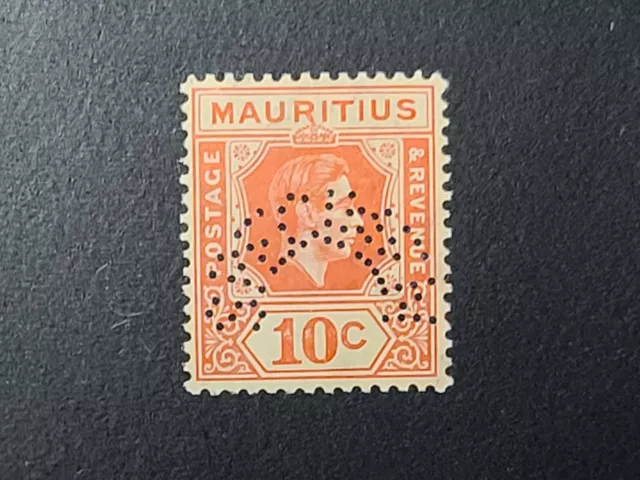
Mauritius Specimen Stamp KGVI 10 Cents Mint Old Specimen Stamp Nice to Keep Save
$9.99 0 Bids or Buy It Now 1d 3h
Mauritius Specimen Stamp KGVI 4 Cents Mint Old Specimen Stamp Nice Keeper Save
$9.99 0 Bids or Buy It Now 1d 3h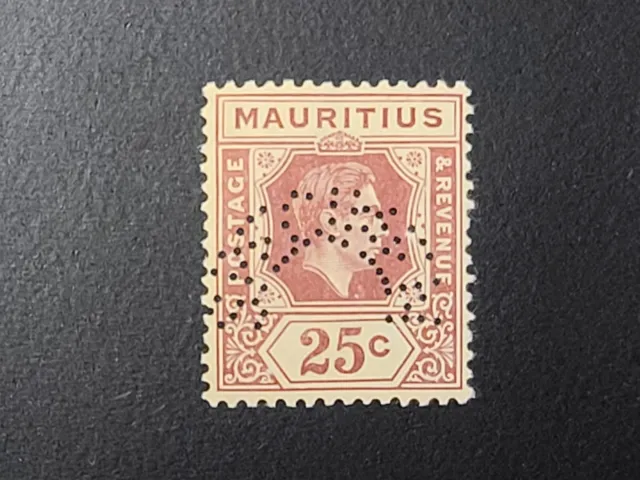
Mauritius Specimen Stamp KGVI 25 Cents Mint Old Specimen Stamp Nice Keeper Save
$9.99 0 Bids or Buy It Now 1d 3h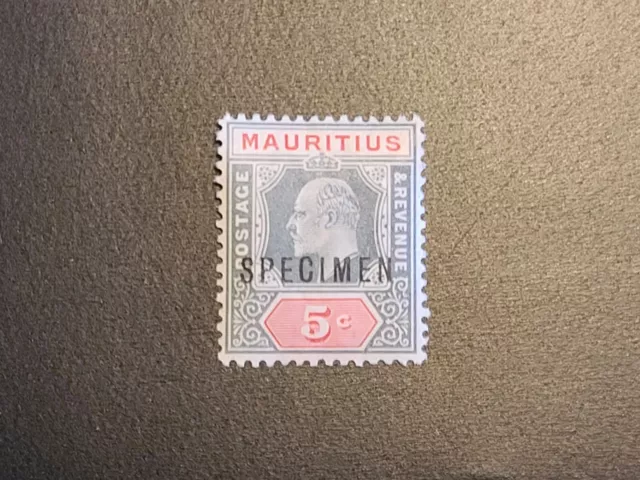
Mauritius Specimen Stamp KEVII 5 Cents Mint Nice Old Specimen Stamp
$9.99 0 Bids or Buy It Now 1d 6h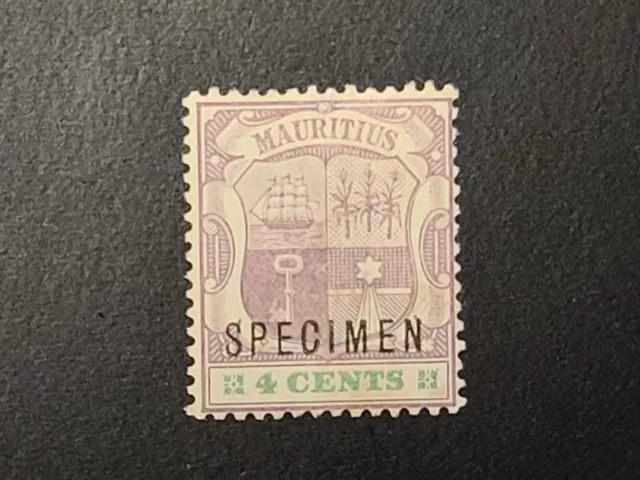
Mauritius Kgvi Specimen Stamp 4 Cents Coat Of Arms Mint Nice Old Specimen Stamp
$9.99 0 Bids or Buy It Now 1d 5h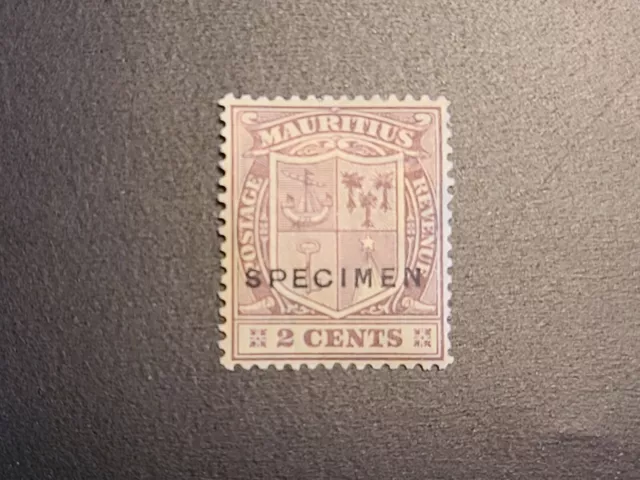
Mauritius Specimen Stamp KGVI 2 Cents Coat of Arms Mint Nice Old Specimen Stamp
$9.99 0 Bids or Buy It Now 1d 6h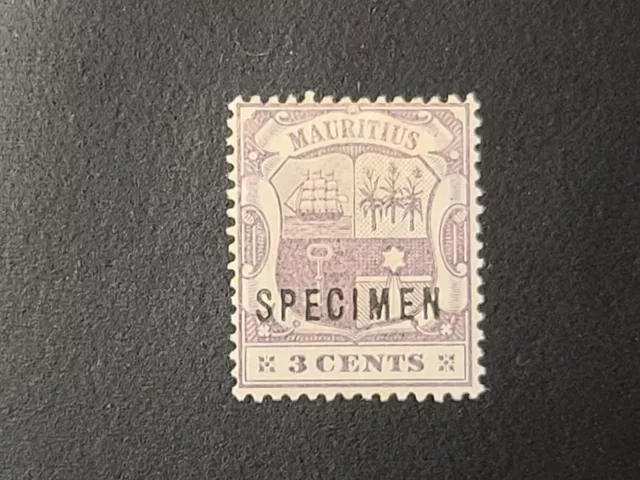
Mauritius Kgvi Specimen Stamp 3 Cents Coat Of Arms Mint Nice Old Specimen Stamp
$9.99 0 Bids or Buy It Now 1d 5h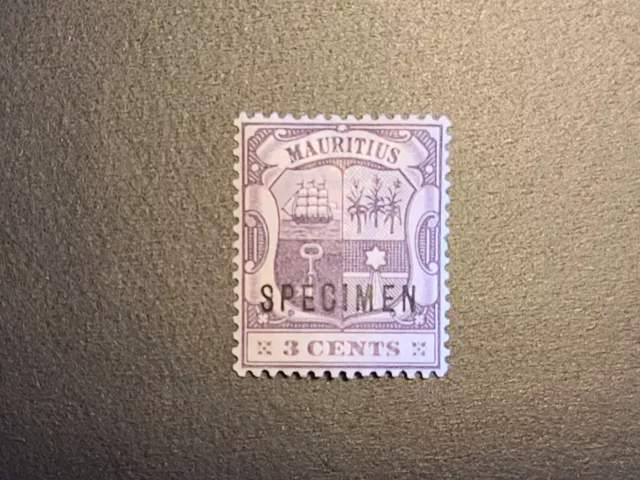
Mauritius Specimen Stamp KGVI 3 Cents Coat of Arms Mint MNH Nice Old Specimen
$9.99 0 Bids or Buy It Now 1d 6h
Mauritius 1938 KGVI Group of Definitive Stamp Issues UM/MM.
$14.42 2 Bids 13h 26m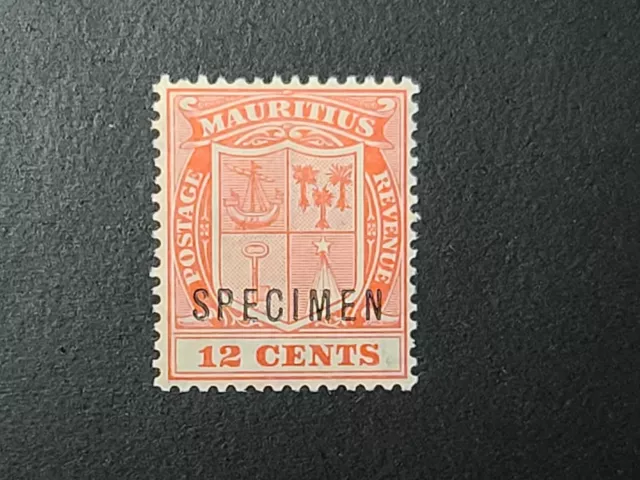
Mauritius Kgvi Specimen Stamp 12 Cents Coat Of Arms Mint Nice Old Specimen Stamp
$9.99 0 Bids or Buy It Now 1d 5h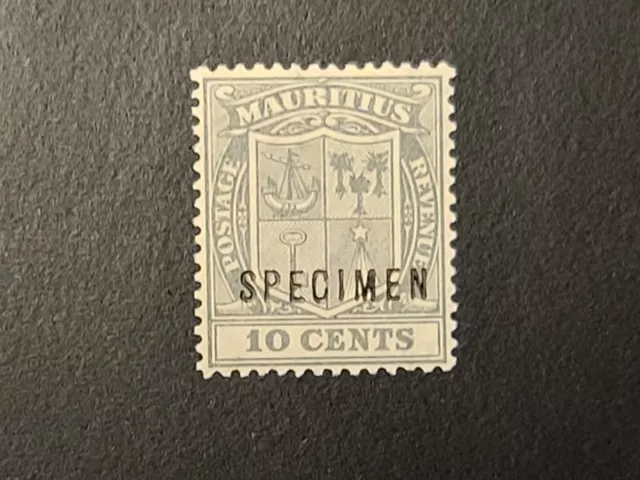
Mauritius Kgvi Specimen Stamp 10 Cents Coat Of Arms Mint Nice Old Specimen Stamp
$9.99 0 Bids or Buy It Now 1d 5h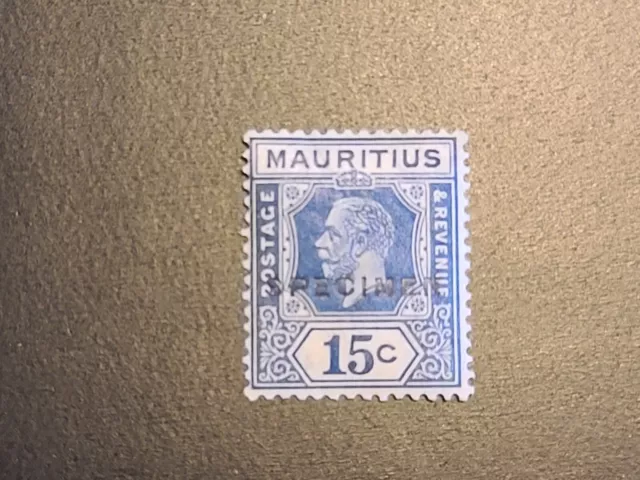
Mauritius Specimen Stamp KGV 15 Cents Mint MNH Mint Nice Old Specimen Stamp
$9.99 0 Bids or Buy It Now 1d 6h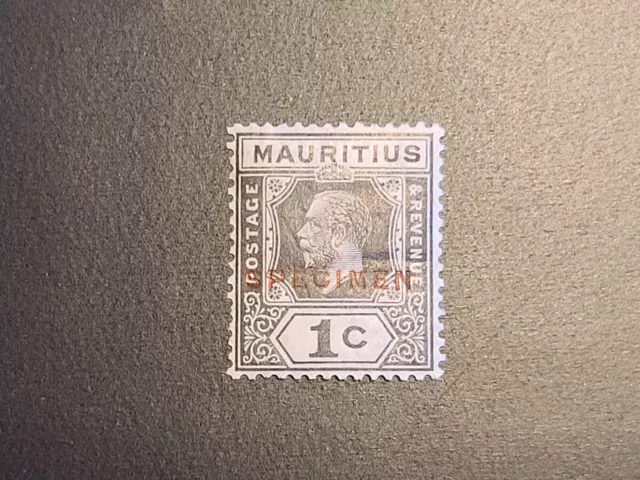
Mauritius Specimen Stamp KGV 1 Cent Mint MNH Mint Nice Old Specimen Stamp
$9.99 0 Bids or Buy It Now 1d 6h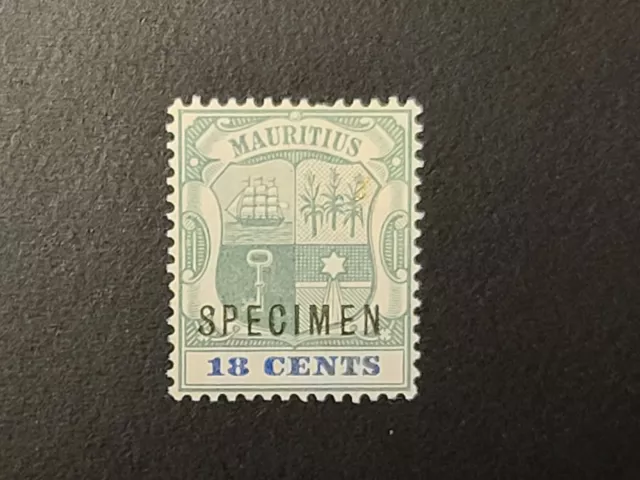
Mauritius Kgvi Specimen Stamp 18 Cents Coat Of Arms Mint Nice Old Specimen Stamp
$11.99 0 Bids or Buy It Now 1d 5h
Mauritius Kgvi Specimen Stamp 20 Cents Coat Of Arms Mint Nice Old Specimen Stamp
$11.99 0 Bids or Buy It Now 1d 5h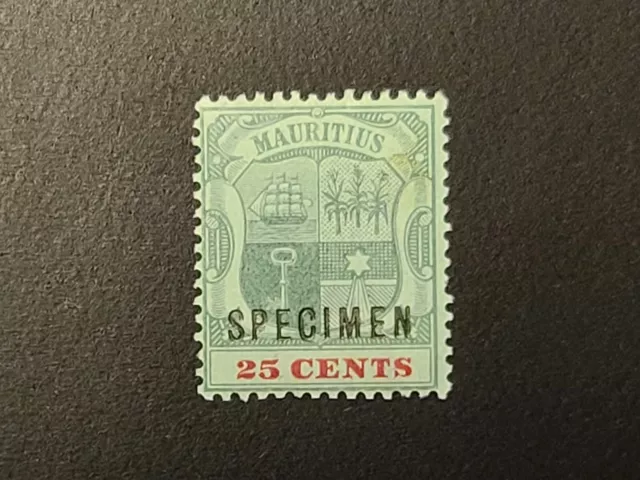
Mauritius Kgvi Specimen Stamp 25 Cents Coat Of Arms Mint Nice Old Specimen Stamp
$11.99 0 Bids or Buy It Now 1d 5h
Mauritius Specimen Stamp KGV 50 Cents Mint MNH Mint Nice Old Specimen Stamp
$12.99 0 Bids or Buy It Now 1d 6h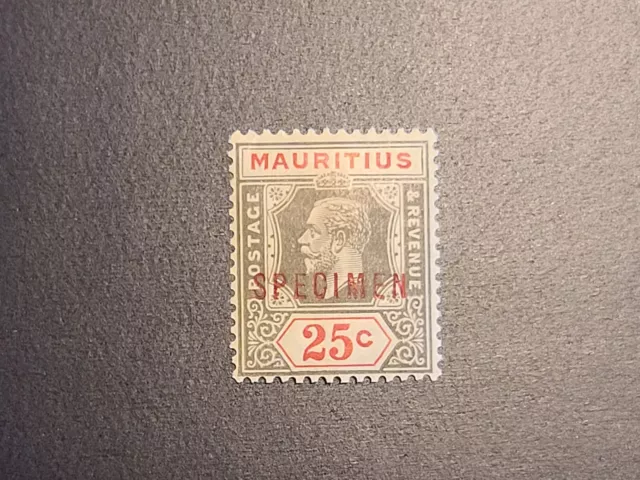
Mauritius Specimen Stamp KGV 25 Cents Mint MNH Mint Nice Old Specimen Stamp
$12.99 0 Bids or Buy It Now 1d 6h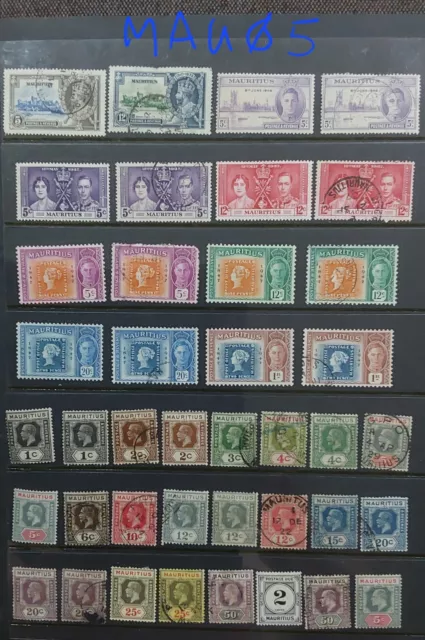
Mauritius KEVII to KGVI Selection Used & Mint (MAU05)
$10.03 0 Bids 1d 16h
Mauritius KGVI & QEII Selection Used & Mint (MAU21)
$3.12 0 Bids 2d 7h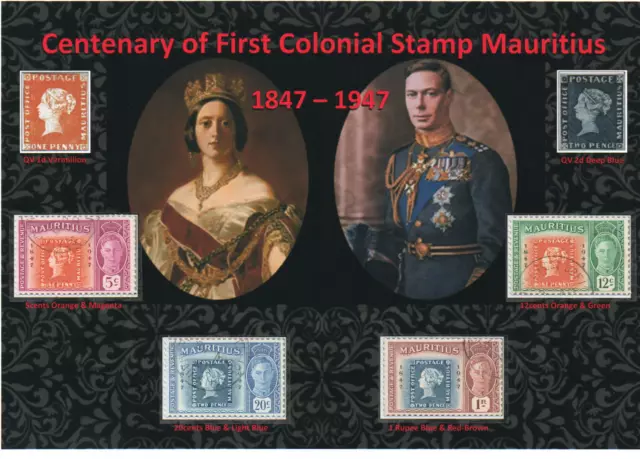
Kgvi 1948 Nice Display First Colonial Stamp Centenary Mauritius 1847-1947 Vfu #2
$8.77 0 Bids 5d 19h
Kgvi 1948 Nice Display First Colonial Stamp Centenary Mauritius 1847-1947 Mm#3
$8.77 0 Bids 5d 23h
Kgvi 1948 Nice Display First Colonial Stamp Centenary Mauritius 1847-1947 Mm#1
$8.77 0 Bids 5d 23h
Kgvi 1948 Nice Display First Colonial Stamp Centenary Mauritius 1847-1947 Mnh #1
$9.41 0 Bids 5d 22h
Mauritius Specimen Stamp 15 Cents Queen Victoria QV Mint MNH Nice Old Stamp
$34.99 0 Bids 1d 6h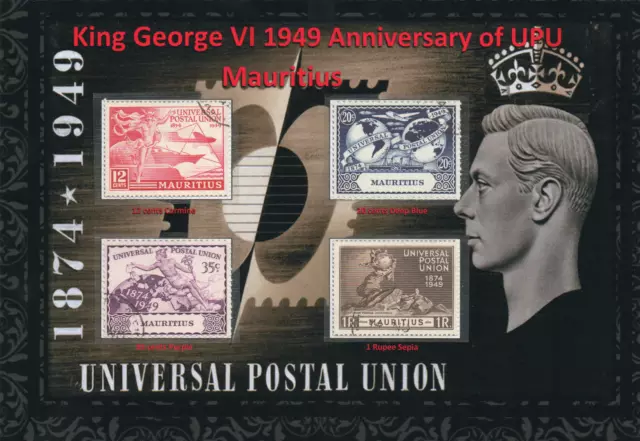
Kgvi 1949 Nice Display Of Anniversary Universal Postal Union Mauritius Vfu#1
$8.14 0 Bids 4d 19h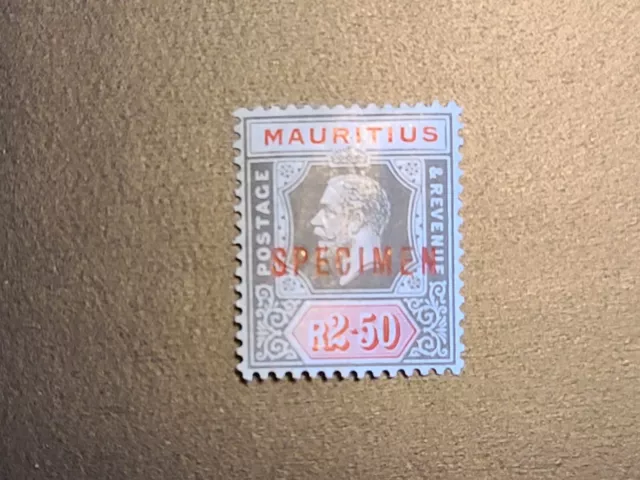
Mauritius Specimen Stamp KGV Rupee R2.50 Mint MNH Mint Nice Old Specimen Stamp
$17.99 0 Bids or Buy It Now 1d 6h
Mauritius KGVI & QEII Selection Used & Mint (MAU18)
$3.12 0 Bids 2d 6h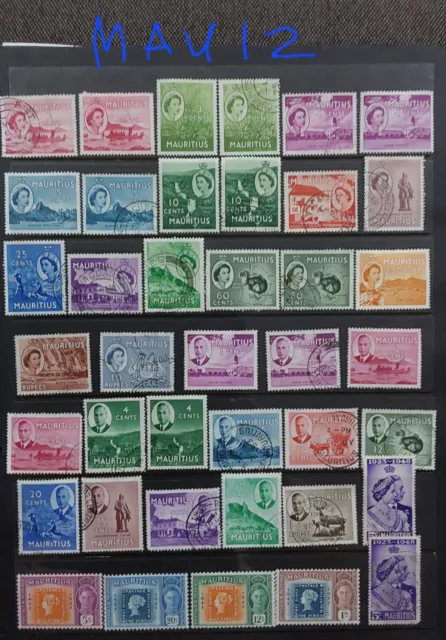
Mauritius QEII & KGVI Selection Local Motifs Etc Used & Mint (MAU12)
$6.26 0 Bids 1d 16h 9 watchers
9 watchers nystamps British Mauritius Stamp Mint OG H Specimen A26y3018$0.21 2 Bids 2d 3h
nystamps British Mauritius Stamp Mint OG H Specimen A26y3018$0.21 2 Bids 2d 3h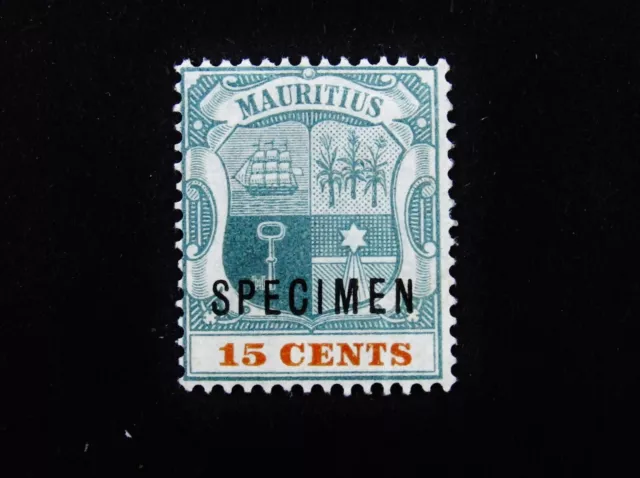 7 watchers
7 watchers nystamps British Mauritius Stamp # 107 Mint OG H $75 SPECIMEN A26y3028$0.34 2 Bids 2d 4h
nystamps British Mauritius Stamp # 107 Mint OG H $75 SPECIMEN A26y3028$0.34 2 Bids 2d 4h
Mauritius 1895-1899 Specimen 2-cent stamp
$20.00 Buy It Now or Best Offer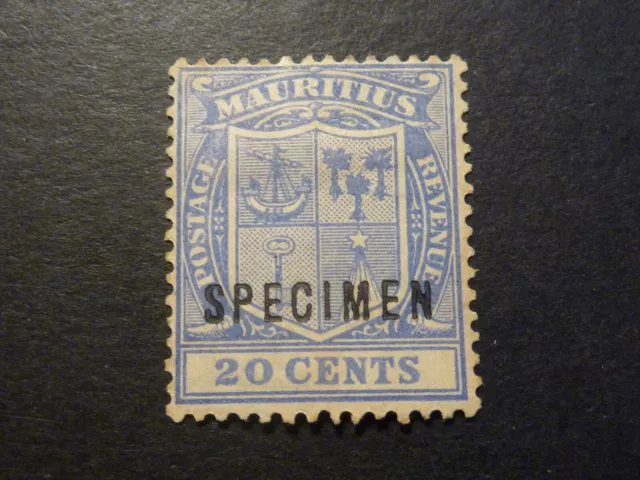
Mauritius 1921 Specimen 20-cent stamp, Scott #177
$45.00 Buy It Now or Best Offer
